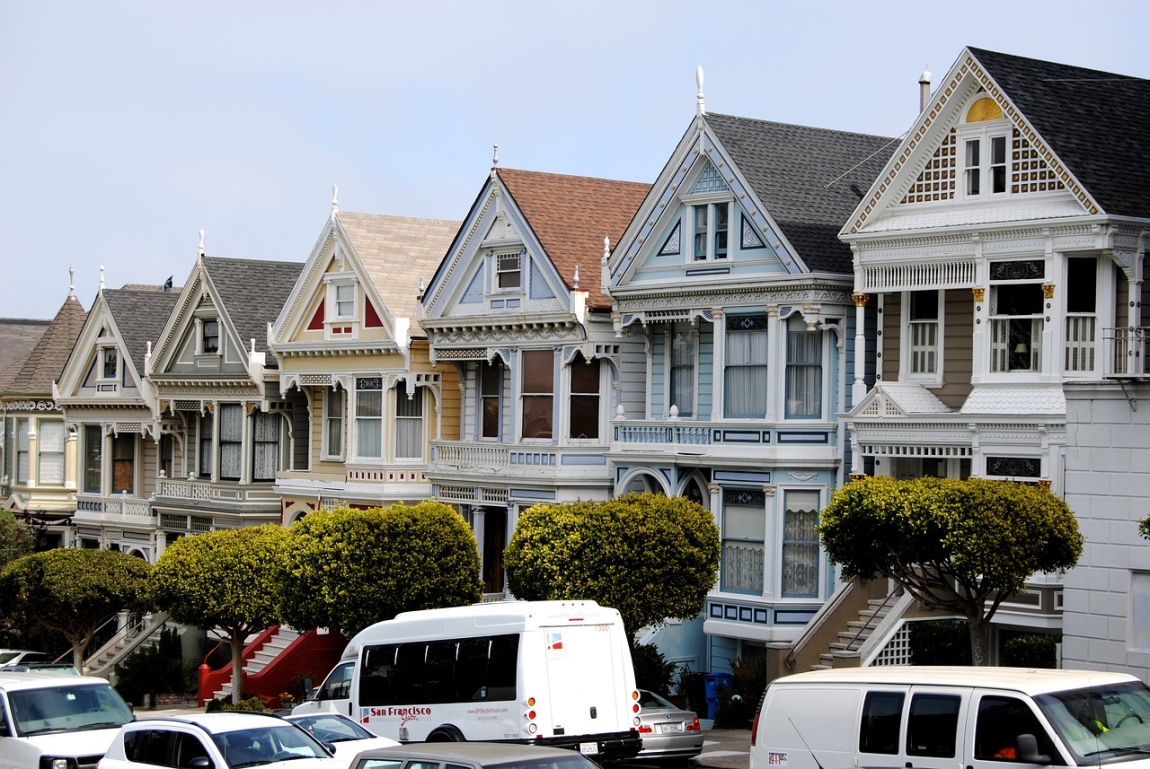The National Building Code of the Philippines (Presidential Decree No. 1096), commonly referred to as PD 1096, serves as the country’s primary regulatory framework for the construction industry.

Its aim is to ensure the safety, health, and welfare of the general public by outlining specific guidelines and standards for various aspects of building design, construction, and maintenance.
In recent years, the Philippines has experienced rapid urbanization and a growing need for infrastructure development. This has brought about a heightened awareness of the importance of safe and sustainable building practices, making the National Building Code an indispensable tool for architects, engineers, builders, and property developers.
By familiarizing oneself with the code’s provisions and its relation to the Philippine real estate laws, industry professionals can ensure that their projects adhere to the highest standards of safety, sustainability, and functionality.
In this article, we will discuss the following topics:
- the historical background and development of the National Building Code
- its purpose and objectives
- the key components of the code
- the building permit application process
- the role of local government units
- notable amendments and revisions
- compliance with the code
- the building code’s relation to sustainability and resilience
- future developments and challenges
- case studies
- and resources for further reading
By the end of this comprehensive introduction, readers will gain a solid understanding of the national building code and its significance in shaping the built environment of the Philippines.
Key Components of the National Building Code
The National Building Code (PD 1096) is a comprehensive document that covers various aspects of building design, construction, and maintenance in the Philippines.
It is essential for industry professionals to understand the key components of the code to ensure that their projects adhere to the highest standards of safety, sustainability, and functionality.
The following sections highlight the main components of the National Building Code:
General Provisions
The general provisions of PD 1096 lay out the code’s objectives, definitions, and scope. This section provides clarity on the code’s intent, its applicability to different types of buildings and structures, and an understanding of the terms used throughout the document.
Administrative Provisions
The administrative provisions outline the roles and responsibilities of various government agencies, including the Department of Public Works and Highways (DPWH), local government units (LGUs), and the Office of the Building Official (OBO).
This section also covers the procedures for securing building permits, inspections, and certifications, as well as the enforcement of the code.
Building Permit Requirements
This component specifies the requirements for obtaining a building permit. It details the necessary documents, such as architectural and engineering plans, specifications, and other supporting documents, that must be submitted by the applicant.
The section also explains the fees associated with the permit application process and the validity of issued permits.
Design Criteria and Standards
The design criteria and standards section provides guidelines for the architectural, structural, electrical, mechanical, and sanitary aspects of building design. This includes provisions for minimum requirements related to building materials, fire resistance, space planning, ventilation, plumbing, and electrical systems.
These criteria ensure that all building projects conform to the established safety and sustainability standards.
Structural and Architectural Requirements
This component focuses on the specific structural and architectural requirements for various types of buildings and structures, such as residential, commercial, industrial, institutional, and agricultural buildings. It includes provisions for the structural design of foundations, walls, floors, roofs, stairs, and other building components.
Additionally, the section outlines the minimum requirements for architectural features, such as doors, windows, and other building elements, to ensure the safety, functionality, and aesthetics of the built environment.
The key components of the National Building Code (PD 1096) provide a comprehensive framework for the design, construction, and maintenance of buildings in the Philippines. By understanding and adhering to these provisions, industry professionals can ensure that their projects contribute to a safe, sustainable, and functional built environment.
The Building Permit Application Process

The building permit application process is a crucial component of the National Building Code (PD 1096) as it ensures that all proposed constructions adhere to the established safety, sustainability, and functionality standards. By obtaining a building permit, industry professionals and property owners demonstrate compliance with the code.
The following subsections outline the steps involved in the building permit application process:
Requirements for Building Permit Applications
Before initiating construction, property owners or their authorized representatives must secure a building permit from the Office of the Building Official (OBO) in their respective local government unit (LGU). The application requires the submission of several documents, including:
- Duly accomplished building permit application form
- Architectural and engineering plans, duly signed and sealed by a licensed professional
- Technical specifications
- Bill of materials and cost estimates
- Structural analysis and design calculations (for certain types of buildings)
- Site development plan and location plan
- Barangay clearance
- Other necessary clearances or certifications depending on the type and location of the project (e.g., environmental compliance certificate, heritage conservation clearance, etc.)
Steps Involved in Obtaining a Building Permit
The building permit application process typically involves the following steps:
- Submission of complete application requirements to the OBO.
- Review of the submitted documents by the OBO and its technical staff, ensuring compliance with the National Building Code, zoning ordinances, and other applicable laws.
- Payment of required permit fees upon approval of the application.
- Issuance of the building permit by the OBO after fees are settled.
It is essential to note that processing times may vary depending on the complexity of the project and the workload of the OBO. Applicants are advised to allot sufficient time for the entire process.
Key Authorities Responsible for Permit Issuance
The Office of the Building Official (OBO), under the supervision of the local government unit (LGU), is primarily responsible for the issuance of building permits.
The OBO ensures that proposed constructions comply with the National Building Code and other applicable laws, regulations, and ordinances. Other relevant government agencies may also be involved in the process, depending on the project type and location.
The Role of Licensed Architects and Engineers
Licensed architects and engineers play a vital role in the building permit application process. They are responsible for preparing the required documents, such as architectural and engineering plans, technical specifications, and design calculations.
They must ensure that the proposed construction adheres to the National Building Code, local zoning ordinances, and other applicable regulations. Moreover, licensed professionals must affix their signatures and seals on the submitted plans, certifying their responsibility for the project’s design and compliance.
Key Takeaway
The building permit application process is an essential aspect of the National Building Code (PD 1096) that ensures the construction industry’s adherence to safety, sustainability, and functionality standards. By following the application process, industry professionals and property owners contribute to the development of a safe and resilient built environment in the Philippines.
The Role of Local Government Units (LGUs)
Local Government Units (LGUs) play a critical role in the implementation and enforcement of the National Building Code (PD 1096) in the Philippines. They ensure that building design, construction, and maintenance practices within their jurisdictions adhere to the established safety, sustainability, and functionality standards.
The following subsections delve into the responsibilities and functions of LGUs concerning the National Building Code:
Coordination with LGUs
To successfully implement the provisions of the National Building Code, close coordination between the national government, particularly the Department of Public Works and Highways (DPWH), and LGUs is essential.
This collaboration enables effective monitoring and enforcement of the code across the country, ensuring that building projects meet the established standards.
LGU Responsibilities in Enforcing the National Building Code
LGUs, through the Office of the Building Official (OBO), have several responsibilities in enforcing PD 1096, including:
- Issuing building permits and certificates of occupancy.
- Reviewing and approving building plans and specifications submitted by applicants to ensure compliance with the National Building Code.
- Conducting inspections of ongoing and completed construction projects to verify compliance with the approved plans and adherence to the code’s provisions.
- Issuing notices of violation, stop-work orders, or demolition orders when necessary.
- Imposing fines and penalties on violators of the code.
- Ensuring that the required building permits and clearances are obtained from other relevant government agencies, such as the Department of Environment and Natural Resources (DENR) and the National Commission for Culture and the Arts (NCCA), when necessary.
- Coordinating with other government agencies and stakeholders in the promotion of safe and sustainable building practices.
The Role of the Office of the Building Official (OBO)
The OBO, under the supervision of the LGU, is responsible for implementing the National Building Code within its jurisdiction. The OBO has the authority to issue building permits, conduct inspections, and enforce compliance with the code.
It is composed of technical staff, including architects, engineers, and other building professionals, who have the expertise to review and assess building plans and specifications.
LGUs and their respective Offices of the Building Official play a critical role in enforcing the National Building Code (PD 1096) in the Philippines. By ensuring compliance with the code, LGUs contribute to the development of a safe, sustainable, and resilient built environment for the benefit of the general public.
Notable Amendments and Revisions
The National Building Code (PD 1096) is subject to amendments and revisions over time to ensure that it remains relevant and responsive to the changing needs and challenges of the construction industry. These updates address developments in building materials, technologies, and construction practices, as well as the evolving demands of safety, sustainability, and resiliency.
The following subsections highlight some notable amendments and revisions to the National Building Code:
Historical Amendments
Since its enactment in 1977, PD 1096 has undergone several amendments to align with contemporary needs and challenges.
Some of these amendments include updates to the provisions on fire safety, seismic design, accessibility, and the introduction of the referral code system, which incorporates specialized codes like the National Structural Code of the Philippines (NSCP), the Philippine Electrical Code (PEC), and the Philippine Mechanical Code (PMC) as supplementary references.
Changes to Design Criteria and Standards
Over the years, the National Building Code has seen changes in design criteria and standards to reflect advancements in building technology and the understanding of environmental hazards. Some of these changes include:
- Updates to the seismic design provisions to address the increasing risk of earthquakes in the Philippines. These revisions consider the latest scientific data, research, and engineering practices to ensure that buildings can withstand seismic events.
- Amendments to the wind load design standards to account for the frequency and intensity of typhoons that affect the country, providing guidelines for more resilient structures.
- Modifications to the fire safety requirements to enhance the protection of life and property, including provisions for fire-resistant materials, proper egress routes, and the installation of fire protection systems.
Updated Provisions for Building Safety and Sustainability
As the construction industry evolves and embraces the principles of sustainability and resilience, the National Building Code has been updated to incorporate guidelines that promote environmentally friendly building practices. Some notable updates include:
- The introduction of green building guidelines that encourage energy efficiency, water conservation, and waste reduction in building design and construction.
- Integration of disaster risk reduction and climate change adaptation measures, such as flood-resistant design principles and the consideration of climate change impacts in building location and design.
- Provisions for the installation and use of renewable energy systems, such as solar panels and wind turbines, in building projects.
The amendments and revisions to the National Building Code (PD 1096) ensure that the code remains relevant and responsive to the changing needs and challenges of the construction industry. By continually updating the code, the Philippine government demonstrates its commitment to promoting safe, sustainable, and resilient building practices for the benefit of the general public.
Compliance with the National Building Code

Compliance with the National Building Code (PD 1096) is a critical aspect of the construction process in the Philippines. Ensuring adherence to the code helps promote safe, sustainable, and resilient building practices, ultimately benefiting the general public and the built environment.
The following subsections discuss the importance of compliance, the consequences of non-compliance, and the procedures in place to ensure adherence to the National Building Code:
Consequences of Non-Compliance
Non-compliance with the National Building Code can result in various legal, financial, and safety consequences, including:
- Fines and penalties imposed by the Office of the Building Official (OBO) or the local government unit (LGU) for violations of the code.
- Stop-work orders, which require the immediate cessation of construction activities until the identified violations are resolved.
- Demolition orders, which may require the removal of unauthorized or non-compliant structures.
- Loss of professional licenses for architects, engineers, and other building professionals involved in non-compliant projects.
- Increased risk of accidents, property damage, and loss of life due to unsafe construction practices.
Demolition and Retrofitting Requirements
In cases where non-compliant structures pose significant risks to public safety or the environment, the OBO or LGU may require demolition or retrofitting. Demolition involves the complete removal of the structure, while retrofitting entails modifying the existing structure to comply with the National Building Code.
Both processes can be time-consuming and costly, emphasizing the importance of adhering to the code from the outset.
Building Inspection Procedures
To ensure compliance with the National Building Code, the OBO or LGU conducts inspections at various stages of the construction process. These inspections verify that the project adheres to the approved plans, complies with the code’s provisions, and follows all relevant laws and regulations.
Some of the key inspection stages include:
- Pre-construction inspection: This inspection is conducted before the commencement of construction to ensure that the site is suitable for the proposed project and that all necessary permits and clearances have been obtained.
- Periodic inspections: Throughout the construction process, inspectors visit the site to check on the progress and verify compliance with the approved plans and the National Building Code.
- Final inspection: Upon completion of the project, a final inspection is conducted to ensure that the structure is safe for occupancy and complies with all applicable regulations. If the project passes the final inspection, a Certificate of Occupancy is issued, indicating that the building is safe and ready for use.
Takeaway
Compliance with the National Building Code (PD 1096) is of paramount importance in the Philippines to ensure the safety, sustainability, and resilience of the built environment. By adhering to the code and cooperating with inspection procedures, industry professionals, property owners, and the public contribute to the development of a safe and sustainable urban landscape.
Building Code in Relation to Sustainability and Resilience

The National Building Code (PD 1096) plays a significant role in promoting sustainability and resilience in the Philippine construction industry. As the country faces increasing environmental challenges, such as climate change, natural disasters, and resource depletion, it becomes essential to incorporate sustainable and resilient design principles into building projects.
The following subsections discuss the ways in which the National Building Code addresses sustainability and resilience in the built environment:
Environmental and Energy Efficiency Considerations
The National Building Code has evolved to incorporate guidelines and requirements that encourage environmental stewardship and energy efficiency in building design and construction. Some of these provisions include:
- Guidelines for passive design strategies, such as natural ventilation, day lighting, and solar shading, which minimize the need for mechanical systems and reduce energy consumption.
- Requirements for energy-efficient lighting, heating, ventilation, and air-conditioning (HVAC) systems that reduce a building’s environmental footprint.
- Provisions for water conservation, including the use of low-flow fixtures, rainwater harvesting systems, and efficient irrigation practices.
- Guidelines for waste reduction and management, such as recycling and proper disposal of construction materials.
Disaster Risk Reduction and Climate Change Adaptation
The National Building Code addresses the need for disaster risk reduction and climate change adaptation in building design and construction. This is accomplished through:
- Updated seismic design provisions that ensure buildings can withstand earthquakes, considering the latest scientific data, research, and engineering practices.
- Revised wind load design standards that account for the frequency and intensity of typhoons affecting the country, providing guidelines for more resilient structures.
- Flood-resistant design principles that consider the elevation, location, and construction materials of a building to reduce the risk of flood damage.
- Guidelines for incorporating climate change impacts into building location and design, such as considering sea-level rise and increased storm surge risk in coastal areas.
Encouraging Green Building Practices
The National Building Code promotes the adoption of green building practices, which focus on minimizing the environmental impact of buildings while maximizing resource efficiency. Some of these practices include:
- Encouraging the use of sustainable and locally sourced building materials, which reduce transportation-related emissions and support local industries.
- Advocating for the installation and use of renewable energy systems, such as solar panels and wind turbines, to reduce reliance on non-renewable energy sources.
- Promoting the integration of green spaces and landscaping in building design, which can provide ecological, social, and aesthetic benefits.
In conclusion, the National Building Code (PD 1096) plays a crucial role in promoting sustainability and resilience in the Philippine construction industry. By incorporating guidelines and provisions that address environmental challenges, disaster risk reduction, and climate change adaptation, the code ensures that the built environment can withstand and adapt to the changing needs of the country while minimizing its environmental impact.
Future Developments and Challenges
The National Building Code (PD 1096) will continue to evolve as the construction industry faces new developments and challenges. By adapting to emerging trends, technologies, and global concerns, the code can maintain its relevance and effectiveness in promoting safe, sustainable, and resilient building practices in the Philippines.
The following subsections discuss some anticipated future developments and challenges that may impact the National Building Code:
Advances in Building Materials and Technologies
As the construction industry embraces new materials and technologies, the National Building Code will need to incorporate updated guidelines and requirements to ensure their safe and effective use. Some emerging trends include:
- Innovative building materials, such as self-healing concrete, engineered timber, and advanced composites, which offer improved durability, reduced environmental impact, and enhanced performance.
- Smart building technologies that integrate IoT devices, sensors, and automation systems to optimize energy efficiency, comfort, and security.
- Modular and prefabricated construction methods, which can streamline the building process, reduce waste, and lower costs.
Climate Change and Disaster Resilience
As the impacts of climate change become more pronounced, the National Building Code must continue to address the need for increased disaster resilience and climate change adaptation. This may involve:
- Further revisions to seismic, wind load, and flood-resistant design provisions to account for the increased frequency and intensity of natural hazards.
- Incorporating guidelines for resilient infrastructure, such as stormwater management systems, sea walls, and coastal protection measures.
- Enhancing the focus on passive design strategies and renewable energy sources to reduce greenhouse gas emissions and mitigate climate change impacts.
Urbanization and Population Growth
Rapid urbanization and population growth in the Philippines will place additional demands on the construction industry and the National Building Code. Some challenges and opportunities include:
- The need for affordable and sustainable housing solutions, particularly in densely populated urban areas.
- The development of transit-oriented and mixed-use projects that promote walkability, reduce traffic congestion, and support public transportation.
- The integration of green spaces and urban agriculture into building design to improve air quality, biodiversity, and overall quality of life.
Regulatory and Enforcement Challenges
As the National Building Code continues to evolve, ensuring effective enforcement and compliance will remain a significant challenge. Potential areas of focus include:
- Strengthening the capacity of local government units (LGUs) and the Office of the Building Official (OBO) through training, resources, and support.
- Streamlining the building permit application process to reduce delays and encourage compliance with the code.
- Leveraging digital technologies, such as e-permit systems and remote inspections, to improve the efficiency and effectiveness of enforcement efforts.
The National Building Code (PD 1096) will need to adapt to future developments and challenges to remain relevant and effective in promoting safe, sustainable, and resilient building practices in the Philippines. By anticipating and addressing these issues, the code can contribute to the development of a built environment that meets the changing needs of the country and its people.
Related Philippine Real Estate Laws
The rent control act is a Philippine law that regulates rental contracts and provides relief to tenants from unreasonable and excessive rent increases. It also provides for landlord-tenant dispute resolution mechanisms.
The Act seeks to protect tenants from abusive practices of landlords and sets out the rights and obligations of both parties. It also requires landlords to provide basic services to tenants.
The land registration act is a Philippine law that provides for the registration of all real estate transactions. It outlines the process for registering ownership of real estate, and provides for the issuance of titles to the owners of registered real estate.
The Act also includes provisions for the registration of mortgages and liens, and sets out the requirements for the registration of leases. The Land Registration Act ensures the security of real estate investments and provides certainty of ownership.
Wrapping It Up
The National Building Code (PD 1096) serves as a critical instrument in guiding the construction industry in the Philippines towards safety, sustainability, and resilience. By providing comprehensive standards and regulations, the code ensures that buildings are designed and constructed to withstand various hazards while minimizing their environmental impact.
As the industry continues to evolve and face new challenges, it is crucial for the National Building Code to adapt and incorporate emerging trends, technologies, and global concerns.
With effective enforcement and compliance, the code can contribute to the development of a safe, sustainable, and resilient built environment, ultimately benefiting the people of the Philippines and the nation as a whole.






